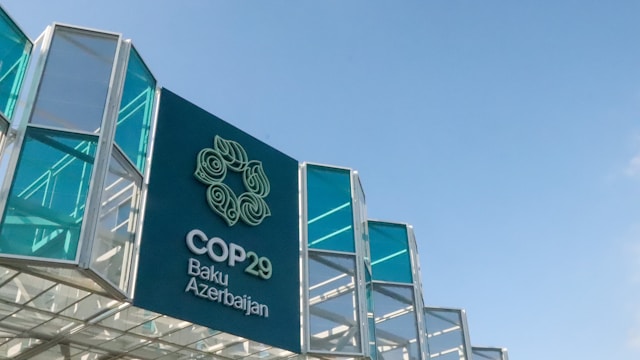Introduction
From November 11 to 22, 2024, the world’s eyes turned to Baku, Azerbaijan, as it hosted the twenty-ninth Conference of the Parties (COP29) under the UN Framework Convention on Climate Change. With global temperatures on track to rise by 2.6°C–3.1°C by 2100 under current policies, the conference emphasized finance, particularly the establishment of a New Collective Quantified Goal to mobilize climate funds for addressing climate change. This blog post highlights the discussions on energy during the conference, specifically energy’s dual role as a driver of economic growth and a principal contributor to greenhouse gas emissions. It examines what these debates mean for Africa’s energy future.
Controversies Surrounding COP29
The choice of Azerbaijan, a major fossil fuel producer, as host for the climate conference drew criticism even before the event began. The paradox – hosting a climate conference while expanding gas production to meet European Union demand – raised concerns about a potential conflict of interest and the influence of fossil fuel lobbyists. Some African countries similarly depend on fossil fuels for energy security and economic development, raising questions about transitioning away from them without harming their growth. Fossil fuels contribute approximately 90% of global emissions, with coal, oil, and gas combustion driving the accumulation of greenhouse gases in the atmosphere. The Intergovernmental Panel on Climate Change warned that without significant emission reductions, achieving the 1.5°C target set by the Paris Agreement will be impossible.
Renewable Energy Initiatives at COP29
Despite the controversies, COP29 spotlighted initiatives to accelerate the shift to renewable energy. The Hydro4NetZero-LAC initiative was launched to develop and modernize sustainable hydropower infrastructure, increasing the energy systems’ flexibility and resilience. Likewise, seven Mediterranean countries committed to developing one terawatt of renewable capacity by 2030 through the TeraMed initiative, led by the International Renewable Energy Agency and the Global Renewables Alliance. With investments that can reach USD 700 billion, the initiative can potentially create three million new jobs in the solar industry alone. COP 29 also witnessed The Breakthrough Agenda’s new Hydrogen Action Declaration launch with the aim to expand political support for scaling clean hydrogen production and use, with Kazakhstan and Singapore joining the agenda’s hydrogen efforts.
Renewable energy advancements globally also took center stage. African nations underscored the importance of distributed renewable energy for electrifying rural areas, while India presented plans to scale up solar and wind energy deployment These efforts, however, remain uneven, hindered by inadequate financing and political inertia.
Nuclear Energy and Carbon Capture Debates
Nuclear energy emerged as a divisive topic at COP29. Advocates argued that it offers a scalable, low-carbon energy source, with France and Japan highlighting their investments in next-generation reactors. Skeptics countered with concerns about high costs, nuclear waste, and the lengthy timelines required for deployment.
Similarly, Carbon capture and storage (CCS) technologies also gained attention. While touted as a solution for reducing industrial emissions, critics pointed out that CCS remains expensive and unproven at scale. Moreover, its adoption risks delaying the transition away from fossil fuels by providing a “technological out” for major polluters, a concept where countries exploit technologies like CCS to maintain the status quo instead of reducing fossil fuel reliance.
Energy Justice and Financing Disparities
Energy justice dominated discussions, with developing nations demanding increased financial support from wealthier countries. Despite promises at previous COPs, It was not until 2022 that developed countries surpassed the $100 billion annual climate finance target for the first time since its commitment at COP15, providing USD 115.9 billion in climate finance for developing nations.
Despite this milestone, questions about equity persist, particularly as the dialogue at the Baku conference shifted toward the establishment of the New Collective Quantified Goal (NCQG). This ambitious $300 billion annual target aims to facilitate sustainable energy transitions in developing nations, yet its reliance on private sector loans rather than grants has ignited significant debate. The NCQG’s design has drawn criticism from potentially disadvantaged low-income nations already struggling with debt. Fatuma Hussein, Africa’s lead negotiator on just transition, pointed out that the lack of direct financial support is a “major departure point“ in negotiations, and discussions on equitable financing have been deferred to COP30.
Africa’s Shift in Climate Diplomacy
Africa’s participation in COP29 highlighted a shift in its climate diplomacy from passive recipient to active negotiator. At COP29, Africa positioned itself not as a victim but as a vital partner in the global climate agenda. The continent’s leaders made it clear that while they are committed to global climate goals, these must align with national development priorities.
The continent’s vast natural resources – solar, wind, hydro, and critical minerals – are now seen as assets for negotiation rather than mere commodities for export. One of the central components of this strategy is leveraging Africa’s rich deposits of critical minerals such as cobalt, lithium, and rare earth elements, essential for renewable energy technologies like electric vehicles and battery storage systems.
As Ms. Bitsat Yohannes of the UN Office of the Special Adviser on Africa remarked, ‘The Africa we want is the Africa the world needs.’ Whether COP29 marks a turning point in addressing Africa’s energy and climate needs will depend on whether actionable commitments follow promises made in Baku.
